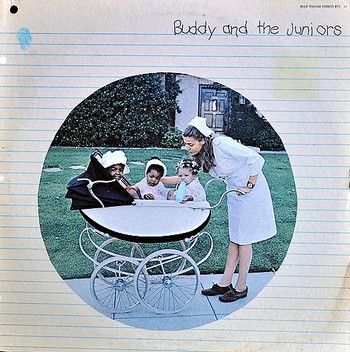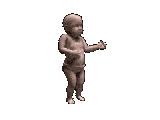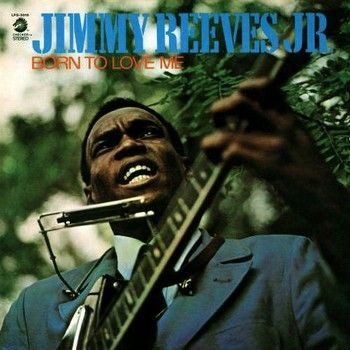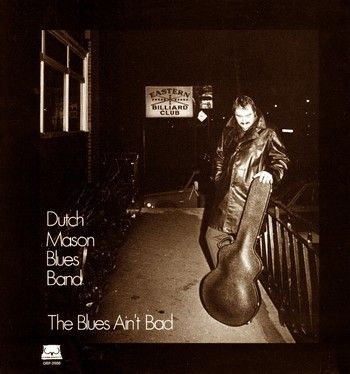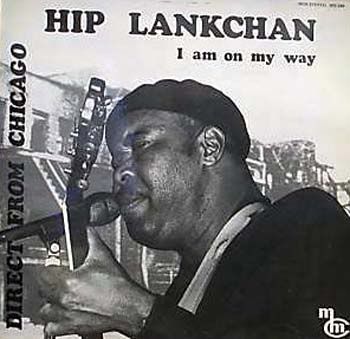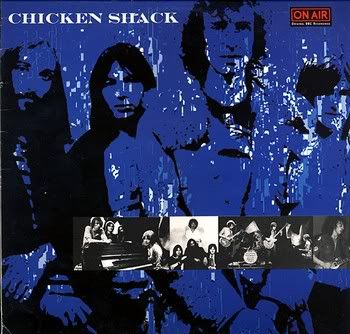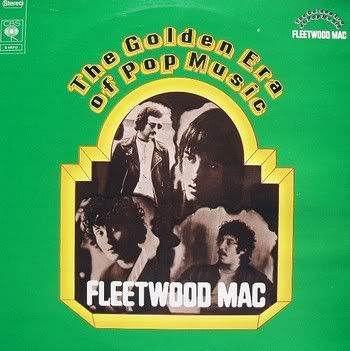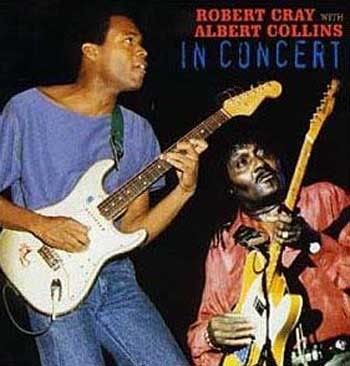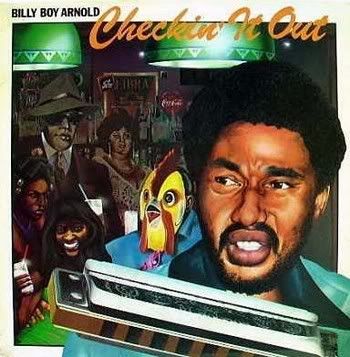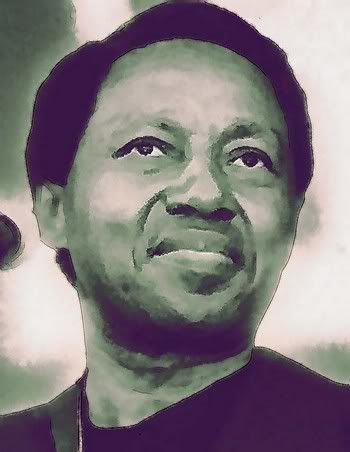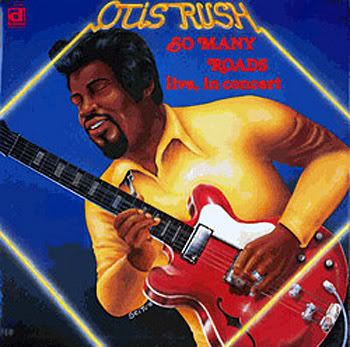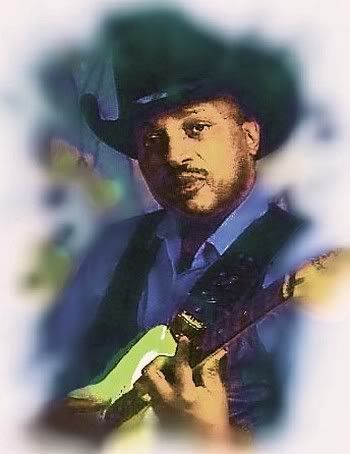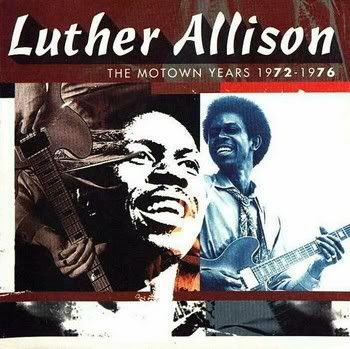
Luther Allison - The Motown Years - 1972-1976 - 1996 - MotownAllison's reign as Motown's only bluesman saw the guitarist offer competently executed, but basically unmemorable, blues with some soul and rock influences. This 17-track compilation includes selections from all three of the LPs he issued on the label (drawing most heavily from his second, Luther's Blues), and adds a previously unreleased live cut from the 1972 Ann Arbor Blues Festival. Pop influences can be heard in the occasional wah-wah guitar and brass-conscious production; Berry Gordy even co-wrote one of the tracks ("Someday Pretty Baby"), and Randy Brecker arranged the horns on Allison's final Motown full-length. © Richie Unterberger, All Music Guide
Most of these tracks have appeared on other Luther Allison albums. Track 17 is previously unreleased officially. It's a good compilation of Luther's Motown recordings. Backing musicians include Steve Khan, Dr John, and Randy and Michael Brecker. As a blues album, it's pretty good. However, the late bluesman's guitar talents are not fully highlighted on the album. To hear his great bluesman's guitar skills, listen to his "Blue Streak" album
TRACKS / COMPOSERS1.) Little Red Rooster - Willie Dixon, Chester Arthur Burnett
2.) Raggedy And Dirty - Luther Allison, Ray Goodman, Andrew Smith
3.) Cut You A-Loose - Mel London
4.) Dust My Broom - Elmore James
5.) Luther's Blues - Luther Allison
6.) Someday Pretty Baby - Berry Gordy, Jr., James Wookley
7.) Easy Baby - Willie Dixon
8.) Part Time Love - Janie Bradford, Richard Wylie
9.) Now You Got It - Luther Allison, Gary Beam, Kenneth George Mills, Walter Block
10.) K.T. - Luther Allison
11.) Let's Have A Little Talk - Luther Allison
12.) Drivin' Wheel - Roosevelt Sykes
13.) Into My Life - Luther Allison
14.) I Can Make It Thru The Day (But Oh Those Lonely Nights) - Ray Charles, Dee Ervin, Robinson, Donna
15.) That's What Love Will Make You Do - Milton Campbell
16.) Night Life - Willie Nelson, Walt Breeland, Paul Buskirk
17.) Last Night I Lost The Best Friend I Ever Had - Lightnin' Hopkins (Recorded at the Ann Arbor Blues Festival, 1972.)
MUSICIANSLuther Allison (Guitar), (Harmonica), (Vocals)
Steve Khan, Gene Block, James Solberg, Ray Goodman (Guitar (Rhythm)
John Lee, Jeffrey Aldrich, Gary Beam, Bob Babbitt (Bass)
Andrew Smith (Bass), (Drums)
Larry Byrne (Organ), (Piano (Electric)
Paul White, Tom Curry (Organ), (Piano)
Mac Rebennack (Piano)
Richard Tee (Keyboards)
Michael Carvin, K.J. Knight, Gerry Brown (Drums)
Ralph MacDonald (Percussion),(Conga)
Richard Drake (Sax (Alto)
Michael Brecker (Sax (Tenor)
Bruce Johnstone (Sax (Baritone)
Randy Brecker (Trumpet)
Garfield Anyove (Harmonica)
Tasha Thomas, Hilda Harris, Gail Kantor, Maretha Stewart (Vocals (Background)
BIO (Wikipedia)Luther Allison (August 17, 1939 — August 12, 1997) was an American blues guitarist. He was born in Widener, Arkansas and moved with his family, at age twelve, to Chicago, Illinois in 1951. He had taught himself guitar whilst in Arkansas and began listening to blues extensively. Three years later he began hanging outside blues clubs with the hopes of being invited to perform. He played with Howlin' Wolf's band and backed up James Cotton. His big break came in 1957 when Muddy Waters invited Allison to the stage. He worked the club circuit throughout the late 1950s and early 1960s and recorded his first single in 1965. Allison was signed to the Delmark Records label in 1967 and the following year his debut album Love Me Mama was released. He performed a set at the 1969 Ann Arbor Blues Festival and was invited to the next three consecutive festivals. He also toured nationwide and, in 1972, was signed to Motown Records, one of the few blues artists to do so. By the mid 1970s he began touring Europe, and moved to France in 1977. He would not return to the United States for another fifteen years. Allison was known for his lengthy concert performances, lengthy guitar solos and crowd walking with his Gibson Les Paul. Allison's manager, and European agent, Thomas Ruf founded the label Ruf Records in 1994. Since signing with Ruf Records, Allison then launched a comeback in association with Alligator Records. Alligator founder, Bruce Iglauer, convinced Allison to return to the United States. The album Soul Fixin' Man was recorded and released in 1994, and Allison toured the U.S. and Canada. Allison won four W.C. Handy Awards in 1994. With the James Solberg Band backing him, non-stop touring and the release of Blue Streak (featuring song "Cherry Red Wine"), Allison continued to earn more Handys and gain wider recognition. Allison scored a host of Living Blues Awards and was featured on the cover pages of major blues publications. He appeared at the 1995 San Francisco Blues Festival. Allison covered "You Can't Always Get What You Want" for the 1997 Rolling Stones' tribute album, Paint it Blue: Songs of the Rolling Stones. In the middle of his summer of 1997 tour, Allison checked into a hospital for chest pains and breathing problems. It was discovered that he had a tumor on his lung that was about to metastasize to his spine. In and out of a coma, Allison died on August 12, 1997, five days before his 58th birthday, in Madison, Wisconsin. His album Reckless had just been released. His son Bernard Allison, at one time a member of his band, is now a solo recording artist. Luther Allison was posthumously inducted into the Blues Hall of Fame in 1998. In 2000, the Chicago Sun-Times called him "The Bruce Springsteen of the blues".
MORE ABOUT LUTHER ALLISONAn American-born guitarist, singer, and songwriter who lived in France since 1980, Luther Allison was the man to book at blues festivals in the mid-'90s. Allison's comeback into the mainstream was ushered in by a recording contract with an American record company, Chicago-based Alligator Records. After he signed with Alligator in 1994, Allison's popularity grew exponentially and he worked steadily until his death in 1997. Born August 17, 1939, in Widener, AR, Allison was the 14th of 15 children, the son of cotton farmers. His parents moved to Chicago when he was in his early teens, but he had a solid awareness of blues before he left Arkansas, as he played organ in the church and learned to sing gospel in Widener as well. Allison recalled that his earliest awareness of blues came via the family radio in Arkansas, which his dad would play at night. Allison recalls listening to both the Grand Ole Opry and B.B. King on the King Biscuit Show on Memphis' WDIA. Although he was a talented baseball player and had begun to learn the shoemaking trade in Chicago after high school, it wasn't long before Allison began to focus more of his attention on playing blues guitar. Allison had been hanging out in blues clubs all through high school, and with his brother's encouragement, he honed his string-bending skills and powerful, soul-filled vocal technique. It was while living with his family on Chicago's West Side that he had his first awareness of wanting to become a full-time bluesman, and he played bass behind guitarist Jimmy Dawkins, who Allison grew up with. Also in Allison's neighborhood were established blues greats like Freddie King, Magic Sam, and Otis Rush. He distinctly remembers everyone talking about Buddy Guy when he came to town from his native Louisiana. After the Allison household moved to the South Side, they lived a few blocks away from Muddy Waters, and Allison and Waters' son Charles became friends. When he was 18 years old, his brother showed him basic chords and notes on the guitar, and the super bright Allison made rapid progress after that. Allison went on to "blues college" by sitting in with some of the most legendary names in blues in Chicago's local venues: Muddy Waters, Elmore James, and Howlin' Wolf among them.His first chance to record came with Bob Koester's then-tiny Delmark Record label, and his first album, Love Me Mama, was released in 1969. But like anyone else with a record out on a small label, it was up to him to go out and promote it, and he did, putting in stellar, show-stopping performances at the Ann Arbor Blues Festivals in 1969, 1970, and 1971. After that, people began to pay attention to Luther Allison, and in 1972 he signed with Motown Records. Meanwhile, a growing group of rock & roll fans began showing up at Allison's shows, because his style seemed so reminiscent of Jimi Hendrix and his live shows clocked in at just under four hours! Although his Motown albums got him to places he'd never been before, like Japan and new venues in Europe, the recordings didn't sell well. He does have the distinction of being one of a few blues musicians to record for Motown. Allison stayed busy in Europe through the rest of the 1970s and 1980s, and recorded Love Me Papa for the French Black and Blue label in 1977. He followed with a number of live recordings from Paris, and, in 1984, he settled outside of Paris, since France and Germany were such major markets for him. At home in the U.S., Allison continued to perform sporadically, when knowledgeable blues festival organizers or blues societies would book him. As accomplished a guitarist as he was, Allison wasn't a straight-ahead Chicago blues musician. He learned the blues long before he got to Chicago. What he did so successfully is take his base of Chicago blues and add touches of rock, soul, reggae, funk, and jazz. Allison's first two albums for Alligator, Soul Fixin' Man and Blue Streak, are arguably two of his strongest. His talents as a songwriter are fully developed, and he's well-recorded and well-produced, often with horns backing his band. Another one to look for is a 1992 reissue on Evidence, Love Me Papa. In 1996, Motown reissued some of the three albums worth of material he recorded for that label (between 1972 and 1976) on compact disc. Well into his mid-50s, Allison continued to delight club and festival audiences around the world with his lengthy, sweat-drenched, high-energy shows, complete with dazzling guitar playing and inspired, soulful vocals. He continued to tour and record until July of 1997, when he was diagnosed with inoperable lung cancer. Just over a month later, he died in a hospital in Madison, WI; a tragic end to one of the great blues comeback stories. 1998's posthumous Live in Paradise captured one of his final shows, recorded on La Reunion Island in April 1997. Thomas Ruf, who was inspired by and became a friend of Allison's shortly before the bluesman's death, issued Underground on Ruf Records in 2007. © Richard Skelly, All Music Guide
